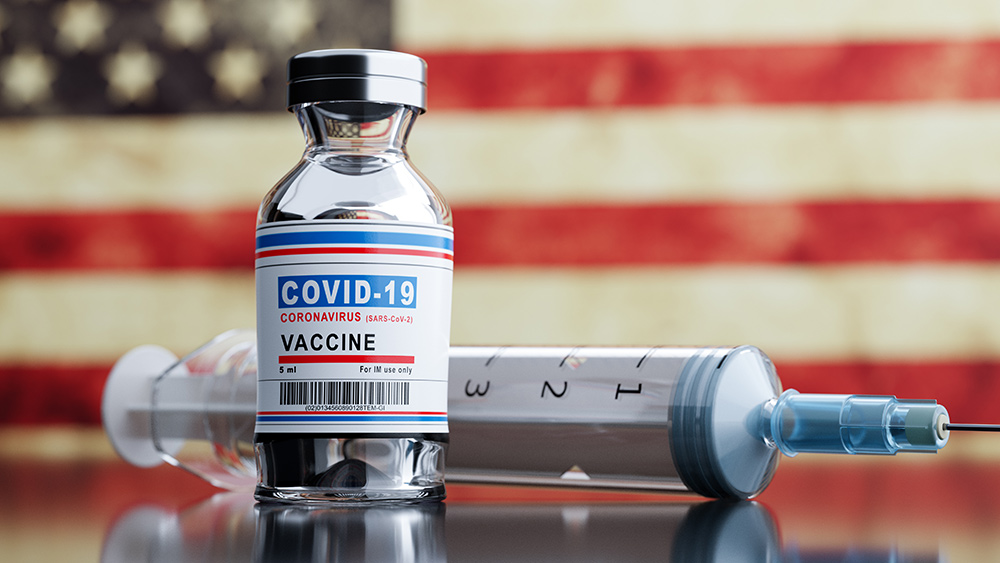N95 masks expose wearers to dangerous levels of toxic cancer- and seizure-causing compounds, study finds
11/29/2023 / By Ethan Huff

The National Institutes of Health (NIH) has re-shared a study emphasizing the fact that wearing an N95 face mask for any reason can expose wearers to dangerous levels of deadly chemicals.
Researchers from Jeonbuk National University in South Korea evaluated two different types of disposable medical-grade masks, as well as several types of reusable cotton masks, of the sort worn during the Wuhan coronavirus (COVID-19) “pandemic.” They discovered that the chemicals released by these masks occurred at levels eight times the recommended safety limit for toxic volatile organic compounds (TVOCs).
The inhalation of TVOCs is linked to health problems like headache and nausea in the short term, and organ damage and even cancer in the long term. The side effects of masking up are much worse than the diseases people who wear them aim to prevent, in other words.
(Related: Last December, researchers from Yale University discovered that N95 masks do not in any way prevent the transmission of respiratory diseases.)
Disposable masks contain up to 14 times more TVOCs than cloth masks
The worst masks are those disposable blue ones, which were found to contain up to 14 times more TVOCs than cloth masks, making them far worse than the reusable kind.
“It is clear that particular attention must be paid to the VOCs (volatile organic compounds) associated with the use of KF94 [medical] masks and their effects on human health,” the researchers wrote in their study, which was originally published back in April.
In order to reduce the risk of exposure to VOCs and TVOCs, researchers recommended opening up the mask package and letting it sit for 30 minutes before affixing it to the face.
Much like a memory foam mattress that smells toxic when first unsealed from the shrink wrap, face masks, and especially the disposable kind, off-gas chemicals that are better off dissipating in the air than being breathed in by the wearer.
“Exposure can be significantly reduced if a mask is opened and left to sit for at least 30 minutes,” the researchers wrote.
The way masks are packaged, the study further suggests, can also play a role in how many chemicals are released upon it being opened.
The NIH issued a statement about the study indicating that just because it is now included in a National Library of Medicine (NLM) database does not imply that the NIH endorses its findings.
Cloth masks, the study concluded, are the safest of all. When made from simple cotton, a mask does not contain nearly the level of chemicals found in those blue plastic ones that everyone was told to wear for three years because of COVID.
Commenting on the study’s findings, Dr. Stuart Fischer, an internal medicine physician in New York, noted that “there seems to be diminishing returns on the need for masks,” meaning there is really no reason to wear one anymore now that science has debunked the need for such an intervention in disease prevention.
The two types of disposable masks looked at in the study, KFAD and KF94, are made from thermoplastics polypropylene and polyurethane nylon. These particular mask varieties were more popularized in the Far East than the West.
The cloth masks looked at, conversely, were made from cotton, ramie (a vegetable fiber) and polyurethane.
To remain politically correct, the researchers concluded in their study that the TVOC concentrations found in all the masks are “harmless to the human body” and pose “no relevant health-related concerns.”
The Environmental Protection Agency (EPA) recommends keeping TVOC levels below 0.5 parts per million (ppm) in indoor air.
More related news about the disease-causing effects of masking can be found at Pandemic.news.
Sources for this article include:
Submit a correction >>
Tagged Under:
cancer criminals, COVID, covid-19, face masks, masks, N95, NIH, pandemic, poison, real investigations, research, seizures, toxic chemicals, toxins, truth, VOC
This article may contain statements that reflect the opinion of the author
RECENT NEWS & ARTICLES
COPYRIGHT © 2017 CANCER SCAMS




















